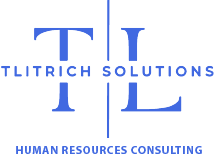Welcoming new employees into your company is an exciting opportunity to lay the foundation for a successful and fulfilling journey. A comprehensive onboarding process is key to integrating new hires seamlessly into your organization and ensuring they feel supported and empowered from day one. Let’s explore the essential elements that could be included in an onboarding checklist for new employees:
1. Pre-Start Preparation:
– Send a welcome email or letter detailing important information such as start date, time, location, dress code, and any documents or forms they need to complete before their first day.
– Provide access to relevant resources, such as employee handbooks, company policies, and organizational charts, to familiarize new hires with your company’s structure and culture.
2. First-Day Essentials:
– Arrange a warm welcome for new hires, including introductions to team members and key stakeholders.
– Set up workstations with necessary equipment, such as computers, phones, and access badges.
– Schedule orientation sessions to provide an overview of company history, values, mission, and goals.
3. Training and Development:
– Create a training plan tailored to the new employee’s role and responsibilities.
– Provide access to training materials, online courses, and job-specific resources to support their learning and development.
– Assign a mentor or buddy to guide them through their first few weeks and answer any questions they may have.
4. Benefits and Policies:
– Review employee benefits packages, including healthcare, retirement plans, and wellness programs.
– Explain company policies and procedures, such as time off, attendance, and performance evaluation processes.
– Assist with completing any necessary paperwork, such as tax forms, direct deposit authorizations, and confidentiality agreements.
5. IT and Security Setup:
– Set up access to company systems, networks, and software applications.
– Provide training on cybersecurity best practices, data protection policies, and password management.
– Ensure new hires understand the importance of maintaining security protocols and safeguarding sensitive information.
6. Performance Expectations:
– Clearly define performance expectations, goals, and objectives for the new hire’s role.
– Schedule regular check-ins and feedback sessions to monitor progress, provide guidance, and address any concerns.
– Encourage open communication and collaboration to foster a supportive and inclusive work environment.
7. Integration and Engagement:
– Facilitate opportunities for new hires to get involved in team projects, meetings, and social events.
– Encourage participation in company culture initiatives, such as volunteer activities, employee resource groups, and team-building exercises.
– Foster connections and relationships with colleagues to help new hires feel connected and valued within the organization.
8. Follow-Up and Feedback:
– Conduct regular follow-up meetings to assess the new hire’s onboarding experience and gather feedback on areas for improvement.
– Address any concerns or challenges promptly and proactively to ensure a positive transition.
– Continuously refine and optimize the onboarding process based on feedback and insights gathered from new hires.
By incorporating these elements into your onboarding checklist, you can create a structured and supportive onboarding experience that sets new employees up for success and strengthens their connection to your organization. Remember, effective onboarding is not just a one-time event but an ongoing process that lays the groundwork for long-term engagement and retention.
